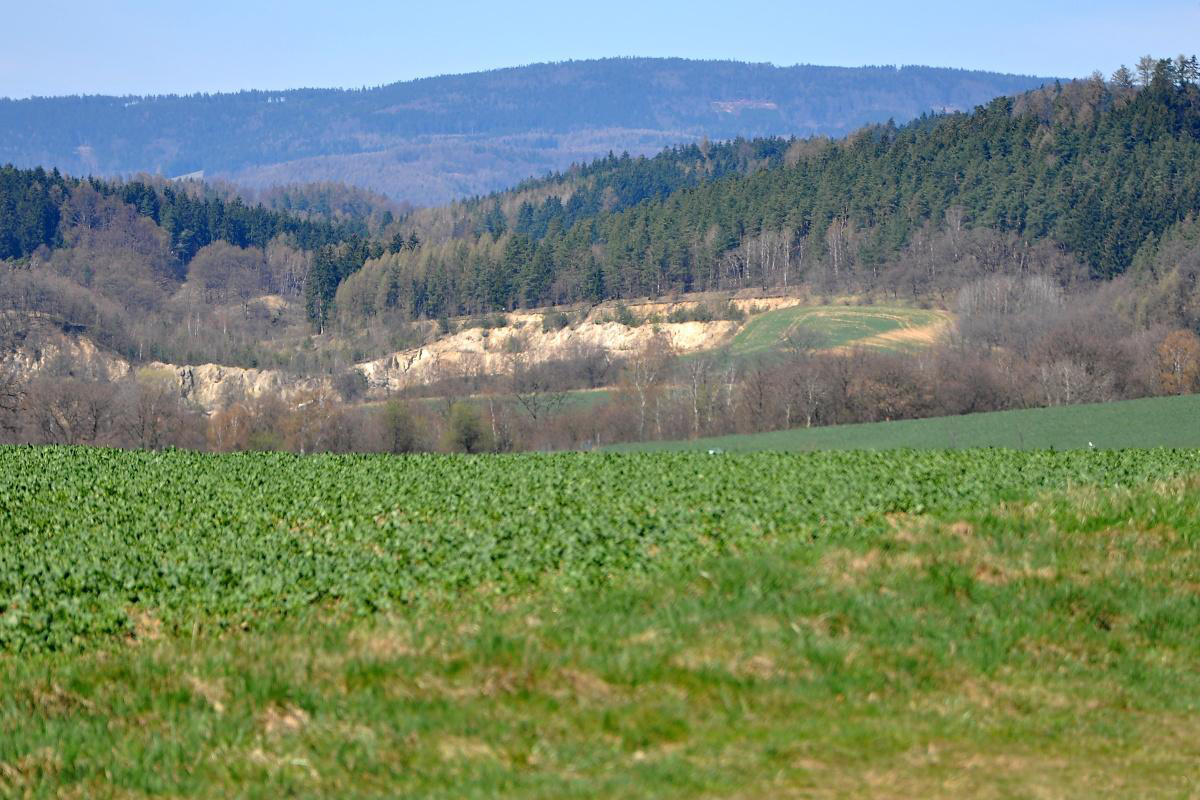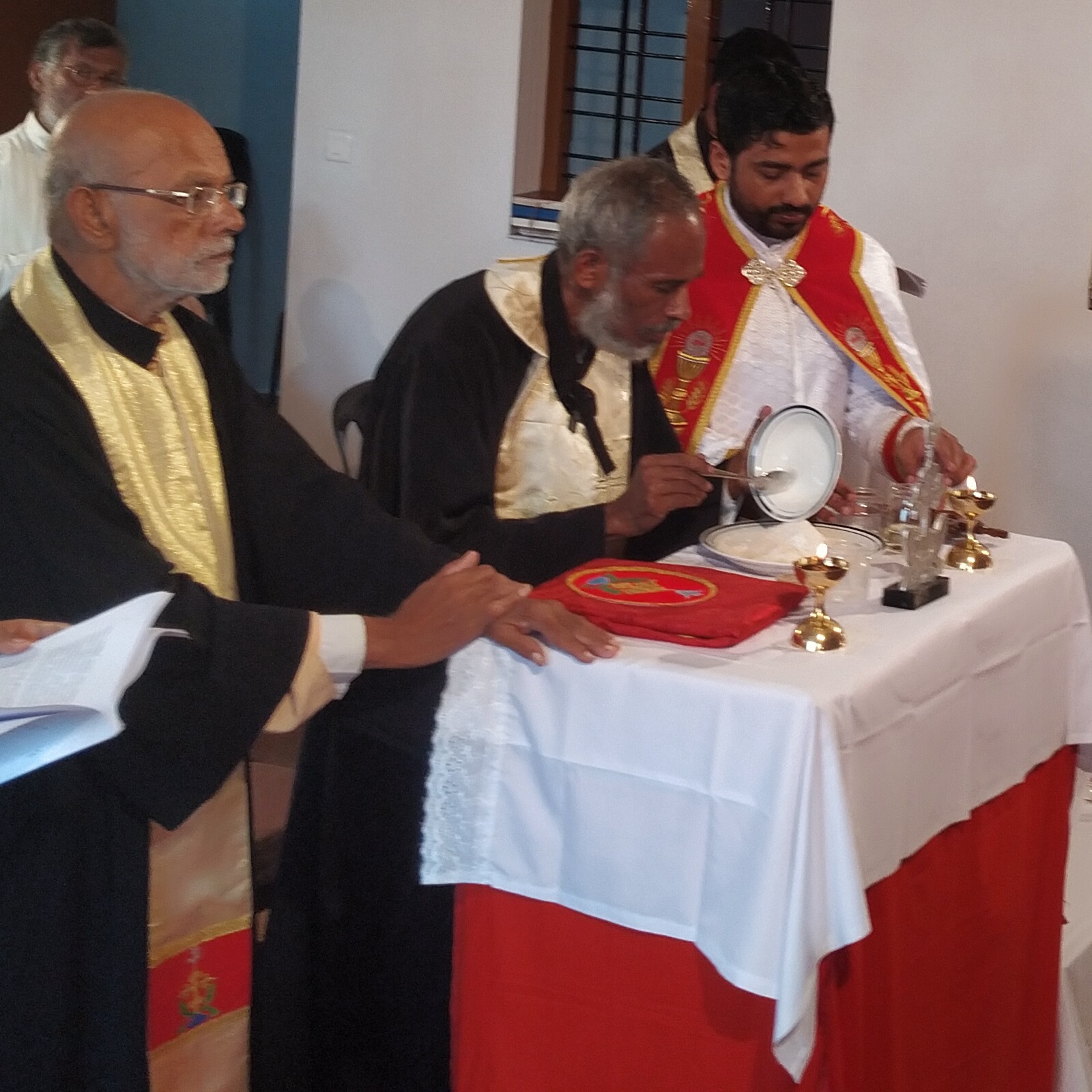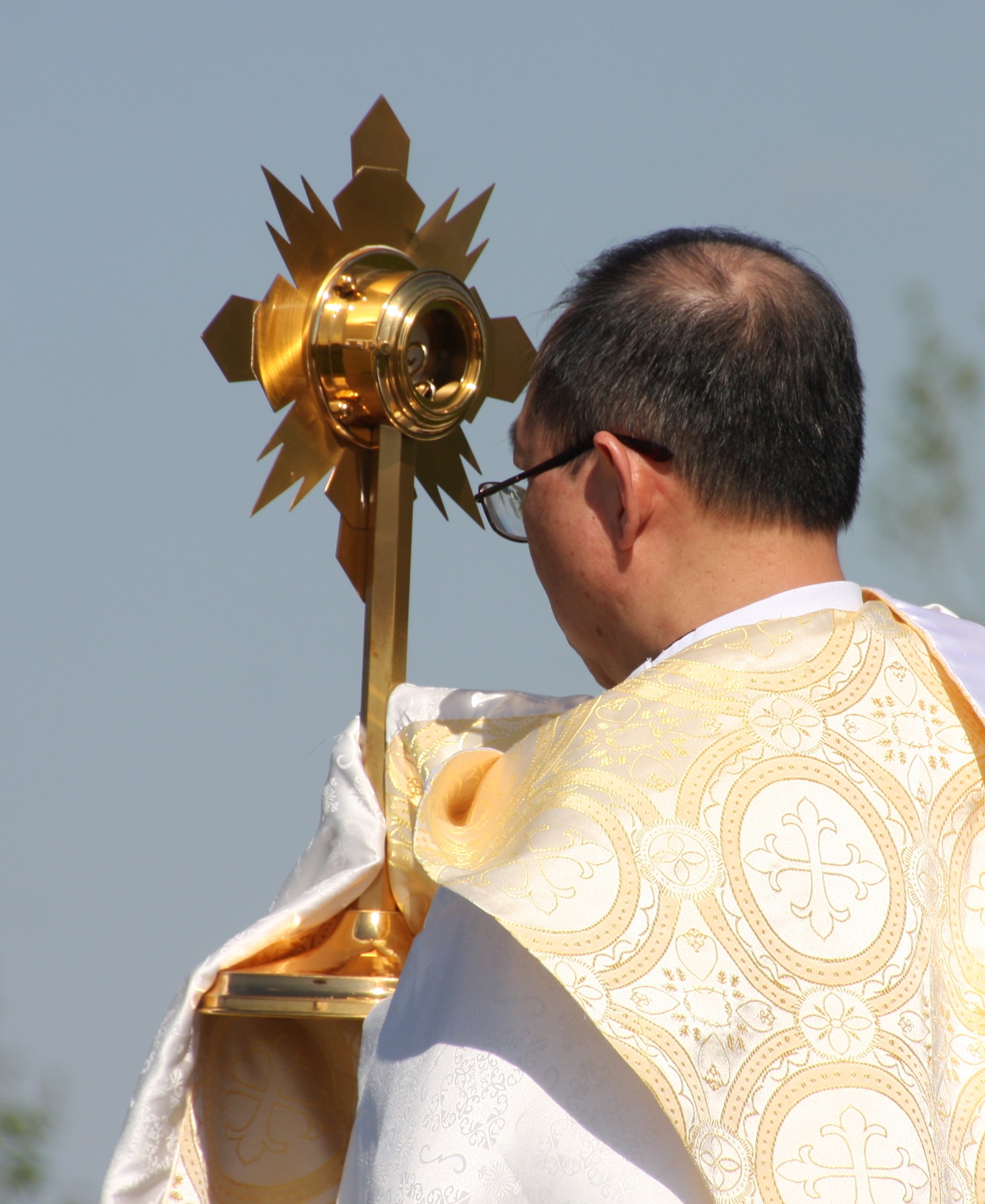|
Church Of The Corpus Christi, Bludov
Church of the Corpus Christi () is a pilgrimage Roman Catholic church in the Olomouc Region of the Czech Republic. Description The church is located in woods in the territory of in Bludov (é umperk District), Bludov, between the villages of Bludov and Hrabenov. The pilgrimage site consists of the church, the Chapel of Our Lady of Lourdes, the calvary, the so-called Ston's cross and the Stations of the Cross. History At the end of the 17th century, a chapel was built on the pilgrimage site. In 1720ã1724, it was rebuilt into the Baroque church. Pilgrims took care of the church until the end of the 18th century. By order of Emperor Joseph II, Holy Roman Emperor, Joseph II, the church was supposed to be demolished, but the Bludov residents refused and the church was preserved. In 1835, it was rebuilt in the Neoclassical style. Legend about the foundation Peasant woman stole a sacramental bread in church in é umperk. She wanted to add the bread to a cattle fodder to improve milk pr ... [...More Info...] [...Related Items...] OR: [Wikipedia] [Google] [Baidu] |
Roman Catholic
The Catholic Church (), also known as the Roman Catholic Church, is the largest Christian church, with 1.27 to 1.41 billion baptized Catholics worldwide as of 2025. It is among the world's oldest and largest international institutions and has played a prominent role in the history and development of Western civilization. O'Collins, p. v (preface). The church consists of 24 ''sui iuris'' (autonomous) churches, including the Latin Church and 23 Eastern Catholic Churches, which comprise almost 3,500 dioceses and eparchies around the world, each overseen by one or more bishops. The pope, who is the bishop of Rome, is the chief pastor of the church. The core beliefs of Catholicism are found in the Nicene Creed. The Catholic Church teaches that it is the one, holy, catholic and apostolic church founded by Jesus Christ in his Great Commission, that its bishops are the successors of Christ's apostles, and that the pope is the successor of Saint Peter, upo ... [...More Info...] [...Related Items...] OR: [Wikipedia] [Google] [Baidu] |
Olomouc Region
Olomouc Region (; , ; ) is an administrative unit () of the Czech Republic, located in the north-western and central part of its historical region of Moravia (''Morava'') and in a small part of the historical region of Czech Silesia (''áeskûˋ Slezsko''). It is named for its capital Olomouc. Olomouc region borders with the Moravian-Silesian Region (in the east), ZlûÙn Region (in the south-east), South Moravian Region (in the south-west) and Pardubice Region (in the west). Furthermore, the region shares a 104 km long border with Poland (in the north). Administrative divisions The Olomouc Region is divided into 5 districts: On the territory of the region there are 13 administrative districts of municipalities with extended powers and 20 administrative districts of municipalities with authorized local authority. Population In January 2024 the population of the Olomouc Region totalled 632,864 inhabitants. As of 2019, 50.3% of region's population lived in municipalities with ... [...More Info...] [...Related Items...] OR: [Wikipedia] [Google] [Baidu] |
Czech Republic
The Czech Republic, also known as Czechia, and historically known as Bohemia, is a landlocked country in Central Europe. The country is bordered by Austria to the south, Germany to the west, Poland to the northeast, and Slovakia to the southeast. The Czech Republic has a hilly landscape that covers an area of with a mostly temperate Humid continental climate, continental and oceanic climate. The capital and largest city is Prague; other major cities and urban areas include Brno, Ostrava, Plzeé and Liberec. The Duchy of Bohemia was founded in the late 9th century under Great Moravia. It was formally recognized as an Imperial Estate of the Holy Roman Empire in 1002 and became Kingdom of Bohemia, a kingdom in 1198. Following the Battle of MohûÀcs in 1526, all of the Lands of the Bohemian Crown were gradually integrated into the Habsburg monarchy. Nearly a hundred years later, the Protestantism, Protestant Bohemian Revolt led to the Thirty Years' War. After the Battle of White ... [...More Info...] [...Related Items...] OR: [Wikipedia] [Google] [Baidu] |
Bludov (é umperk District)
Bludov (; ) is a spa municipality and village in é umperk District in the Olomouc Region of the Czech Republic. It has about 3,000 inhabitants. Etymology The name is derived from the name of its probable founder called Blud, who became known as Blud of Bludov. Geography Bludov is located about southwest of é umperk and northwest of Olomouc. The southwestern part of the municipal territory lies in the Mohelnice Depression lowland and the northeastern part lies in the HanuéÀovice Highlands. The highest point is at above sea level. The Morava River partly forms the western border of the municipality, the DesnûÀ partly forms the eastern border. History Bludov was probably established at the turn of the 12th and 13th century. Since its foundation, it was purely Czech village. Until the 19th century, it was an agricultural village. Blud of Bludov's son built a castle on the slope of the HûÀj Hill. The Bludov Castle was destroyed during the BohemianãHungarian War (1468ã1478 ... [...More Info...] [...Related Items...] OR: [Wikipedia] [Google] [Baidu] |
Stations Of The Cross
The Stations of the Cross or the Way of the Cross, also known as the Via Dolorosa, Way of Sorrows or the , are a series of fourteen images depicting Jesus in Christianity, Jesus Christ on the day of Crucifixion of Jesus, his crucifixion and accompanying prayers, These stations are derived from the imitations of the in Jerusalem, Palestine, which is a traditional processional route symbolizing the path Jesus walked from Lions' Gate to Mount Calvary. The objective of the stations is to help the Christian faithful to make a spiritual Christian pilgrimage, pilgrimage through contemplation of the Passion (Christianity), Passion of Christ. It has become one of the most popular devotions and the stations can be found in many Western Christian churches, including those in the Roman Catholic, Lutheran, Anglican, and Methodist traditions. Commonly, a series of 14 images will be arranged in numbered order along a path, along which worshippersãindividually or in a processionãmove in or ... [...More Info...] [...Related Items...] OR: [Wikipedia] [Google] [Baidu] |
Joseph II, Holy Roman Emperor
Joseph II (13 March 1741 ã 20 February 1790) was Holy Roman Emperor from 18 August 1765 and sole ruler of the Habsburg monarchy from 29 November 1780 until his death. He was the eldest son of Empress Maria Theresa and her husband, Francis I, Holy Roman Emperor, Emperor Francis I, and the brother of Marie Antoinette, Leopold II, Holy Roman Emperor, Leopold II, Maria Carolina of Austria, and Maria Amalia, Duchess of Parma. He was thus the first ruler in the Austrian dominions of the union of the Houses of House of Habsburg, Habsburg and House of Lorraine, Lorraine, styled Habsburg-Lorraine. Joseph was a proponent of enlightened absolutism like his brother Leopold II, Holy Roman Emperor, Leopold II; however, his commitment to secularizing, liberalizing and modernizing reforms resulted in significant opposition, which resulted in failure to fully implement his programs. Meanwhile, despite making some territorial gains, his reckless foreign policy badly isolated Austria. He has be ... [...More Info...] [...Related Items...] OR: [Wikipedia] [Google] [Baidu] |
Sacramental Bread
Sacramental bread, also called Communion bread, Communion wafer, Sacred host, Eucharistic bread, the Lamb or simply the host (), is the bread used in the Christian ritual of the Eucharist. Along with sacramental wine, it is one of two elements of the Eucharist. The bread may be either leavened or unleavened, depending on tradition. Catholic theology generally teaches that at the Words of Institution the bread's substance is changed into the Body of Christ, a process known as transubstantiation. Conversly, Eastern Christian theology generally views the epiclesis as the point at which the change occurs. Christianity Etymology of ''host'' The word ''host'' is derived from the Latin , which means 'sacrificial victim'. The term can be used to describe the bread both before and after consecration, although it is more correct to use it after consecration. Eastern traditions With the exception of Churches of the Armenian Rite, the Maronite Church, and the Syro-Malabar Church, ... [...More Info...] [...Related Items...] OR: [Wikipedia] [Google] [Baidu] |
é umperk
é umperk (; ) is a town in the Olomouc Region of the Czech Republic. It has about 25,000 inhabitants. It is an industrial town, but it also contains valuable historical and architectural monuments. The historic town centre is well preserved and is protected as an Cultural monument (Czech Republic)#Monument zones, urban monument zone. Etymology The original German language, German name is derived from ''SchûÑn Berg'', meaning "beautiful hill", which later supplemented by a distinguishing adjective ''MûÊhrisch'' (i.e. Moravian). The Czech language, Czech name ''é umperk'' evolved from a direct phonetic transcription. After World War II and the Expulsion of Germans from Czechoslovakia, expulsion of Germans, there was a suggestion of giving the town a name with Czech origins. Suggestions included approximate translations such as ''KrûÀsnûÀ Hora'', ''KrûÀsov'' or ''KrûÀsno nad Dásnou'', and names unrelated to the original name, such as ''Svobodov'', ''Velenov'', ''LnûÀéov'' and ''Pé ... [...More Info...] [...Related Items...] OR: [Wikipedia] [Google] [Baidu] |
Monstrance
A monstrance, also known as an ostensorium (or an ostensory), is a vessel used in Roman Catholic, Old Catholic, High Church Lutheran and Anglican churches for the display on an altar of some object of piety, such as the consecrated Eucharistic Sacramental bread (host) during Eucharistic adoration or during the Benediction of the Blessed Sacrament. A monstrance may also serve as a reliquary for the public display of relics of some saints."" New Advent Catholic Encyclopedia. Retrieved on 2014-11-16. The word ''monstrance'' comes from the word , while the word ''ostensorium'' comes from the Latin word . Either term, each expressing the concept of "showing", can refer to a vessel intended for the exposition of the < ... [...More Info...] [...Related Items...] OR: [Wikipedia] [Google] [Baidu] |
é umperk District
é umperk District () is a Okres, district in the Olomouc Region of the Czech Republic. Its capital is the town of é umperk. Administrative division é umperk District is divided into three Districts of the Czech Republic#Municipalities with extended competence, administrative districts of municipalities with extended competence: é umperk, Mohelnice and ZûÀbéeh. List of municipalities Towns are marked in bold: Bludov (é umperk District), Bludov - BohdûÙkov - Bohuslavice (é umperk District), Bohuslavice - BohutûÙn (é umperk District), BohutûÙn - BrannûÀ - BratruéÀov - BrnûÙáko - BuéÀûÙn - Chromeá - Dlouhomilov - DolnûÙ Studûˋnky - Drozdov (é umperk District), Drozdov - Dubicko - HanuéÀovice - HornûÙ Studûˋnky - HoéÀtejn - HrabáéÀice - HrabiéÀûÙn - HrabovûÀ (é umperk District), HrabovûÀ - Hynáina - Jakubovice - JanouéÀov - JedlûÙ - JestéebûÙ (é umperk District), JestéebûÙ - Jindéichov (é umperk District), Jindéichov - KamennûÀ (é umperk District), KamennûÀ - Klopina - KoléÀov ... [...More Info...] [...Related Items...] OR: [Wikipedia] [Google] [Baidu] |





